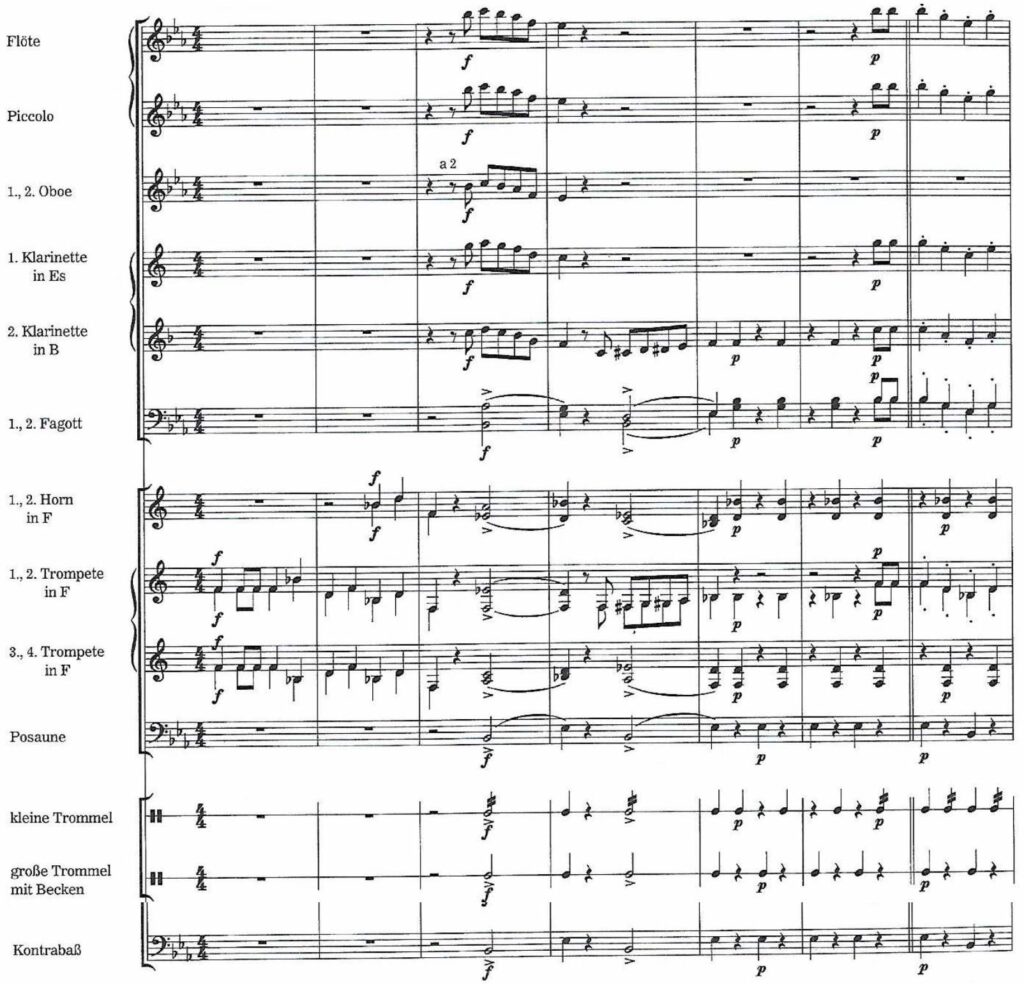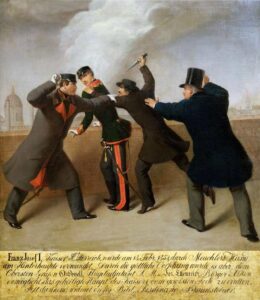Johann Strauss II (1825-1899) Kaiser Franz Joseph I. Rettungsjubel Marsch / Emperor Franz Joseph I. Rescue Jubilation March, op. 126

(Fl., Picc., 2 Ob., 2 Cl.in Eb/B, 2 Bassoons, 2 Ho.in F, 4 Trp.in F, Trb., D.B., percussion ad lib.)
Franz Joseph I. war in der Monarchie zunächst eher verhasst als populär. Besonders der Hass der Ungarn veranlasste den Schneider János Libényi zu einem Messerattentat auf den Kaiser. Franz Joseph trug nur eine unbedeutende Stichverletzung am Nacken davon, während Libényi hinge- richtet wurde. Für den jungen Johann Strauss ergab sich die Gelegenheit, die Rettung des Monar- chen auf auffälligste Weise zu feiern. Er veranstaltete am 6. März 1853 ein Fest im Etablissement „Zum Sperl“, bei dem er seinen flotten Marsch, in dem er die österreichische Volkshymne ver- webte, zum ersten Mal präsentierte. Für die Stimmung der Wiener war damals ein Spottvers be- zeichnend: „Auf dem Simmeringer Had hat’s an Schneider verwaht. Es g’schicht ihm schon recht, warum sticht er so schlecht!“

Franz Joseph I was initially more hated than popular in the monarchy. Especially the hatred of the Hun-
garians caused the tailor János Libényi to assassinate the emperor with a knife. Franz Joseph sus- tained only a minor stab wound to the neck while Libényi was executed. For the young Johann Strauss the opportunity arose to celebrate the rescue of the monarch in the most conspicuous way. On March 6, 1853, he organized a festival in the “Zum Sperl” establishment, where he pre- sented his brisk march, in which he interwoven the Austrian folk anthem, for the first time. A mock- ing verse was characteristic of the Viennese atmosphere at the time: “A tailor has been blown away on the Simmeringer heath’s. It’s all right, why does he sting so badly! ” (Simmering is a sub- urb from Vienna)
| sound sample / Tonbeispiel | score/parts PDF download: € 32,- | add to cart / in den Warenkorb |
